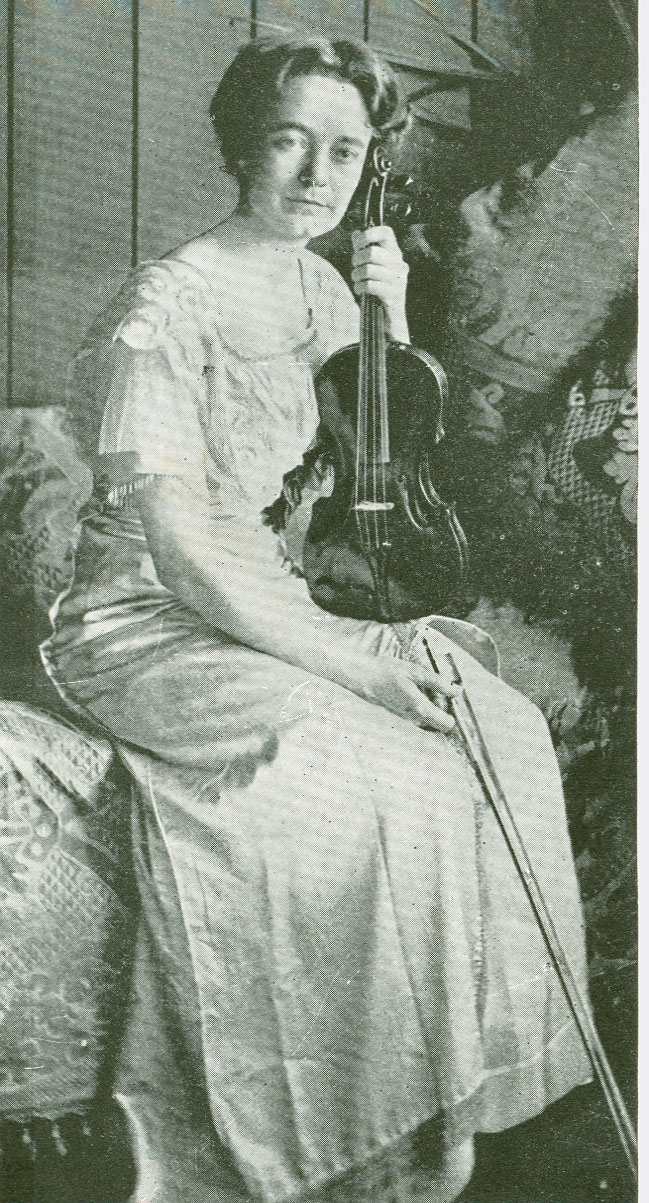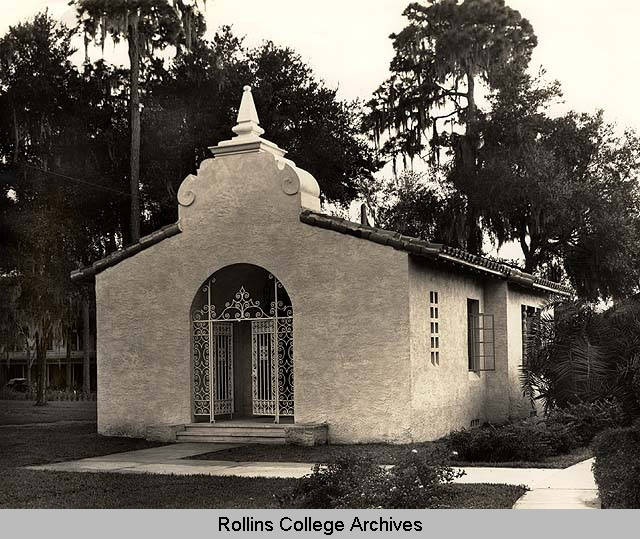
Susan Hart Dyer was born to Susan Hart Palmer and George Leland Dyer on December 20, 1880 in Annapolis, Maryland. Her father was a Commodore in the United States Navy, and as such much of her childhood was spent traveling. In addition to attending school in Annapolis, New York, and Washington, D.C., Dyer followed her father across the Atlantic, and her diaries from these years demonstrate the profound influence that this nomadic life had upon her.1 Fellow Rollins faculty Marion Rous would remark years later that “through all her voyages and her varied sojourns as a naval officer’s daughter, [Dyer] kept her sharp ears open to whatever music was wafted her way.”2
Having studied primarily visual art throughout her previous schooling,3 Dyer enrolled at the Peabody Institute of Music in 1897 where she studied violin with J. C. van Hulsteyn and harmony with Otis B. Boise. She graduated with her Teacher’s Certificate in Violin in 1902.4 There follows something of a gap in Dyer’s biography, though she is known to have spent 1904 in Guam; her father serving as governor, Dyer was appointed by the government as a “special laborer” and taught at the local schools until regular teachers arrived.5
It was during her year in Guam that Dyer wrote her earliest dated poems. Poetry would remain an important part of Dyer’s artistic output until 1915, after which point she apparently stopped writing. Throughout these twelve years, however, Dyer recorded many impressions of her travels in verse. Her work was published in several periodicals, including The American Magazine, The Anchorage, Everybody’s, The Lyric Year, and Scribner’s.
It was in 1909 that Dyer first came to Rollins, serving as an instructor in violin. She remained for only two academic years, resigning her position in 1911 to enroll at Yale University. There she studied composition and music theory under Horatio Parker and David Stanley Smith, and her Concert Overture in A Minor was awarded the 1914 Steinert Prize in Orchestral Composition.6 Dyer graduated from Yale with her Bachelor of Music in 1914, completing her degree in three years rather than the normative four to five of the period.7
In September of 1914 Dyer was back at Rollins, having been hired as an instructor of violin, harmony, music theory, and musical history. She appears to have taken a sabbatical the following academic year, traveling back to New Haven where she served its largely immigrant community by founding the city’s Neighborhood House Settlement Music School. Upon her return to Winter Park in 1916 she was appointed Director of the Rollins College Conservatory of Music as well as head of the music theory department. She was known for her professionalization of the Conservatory, making it a thriving center for the arts in central Florida.
At this time Dyer was busily engaged with various other aspects of her professional career as well. During the First World War she was appointed the State Director of Liberty Choruses under the Florida Council of Defense, aiding the war effort through choral music.8 In late 1919 she was made the Winter Park and Orlando correspondent for the music magazine Musical America. Dyer also served the Florida Federation of Music Clubs as chairperson from 1918–1921, as president in 1920, and as vice president from 1921 until her death; during her brief presidency she raised the membership from eight clubs to forty-four.
Dyer resigned her position at Rollins in March of 1922 and relocated to New York City, where she had recently been hired as director of the Greenwich House Music School. Unfortunately, she took ill a few short weeks into her new position. Dyer succumbed to liver necrosis and died in the Presbyterian Hospital of New York City on October 21, 1922. She is buried beside her parents at the Arlington National Cemetery.
Rollins faculty, administration, and alumni did much to preserve the legacy of Susan Dyer. Chief among their efforts was the construction of the Dyer Memorial Music Building on the Rollins Campus, which served as a memorial to Dyer and her parents, “whose contribution to the cultural life of Winter Park was incalculable."9 The project was time-consuming, being first conceived in 1923 and not completed until 1940. The building originally served as a concert hall, a music-broadcasting studio, and a repository for recordings donated by the Carnegie Foundation. The Memorial was renamed the Faculty Club under the Critchfield administration, and is now used primarily as a site for classes, lectures, meetings, and recitals.

Susan Dyer’s legacy lives on, however, in the musical institutions at which she worked. The New Haven Neighborhood Music School and the Rollins Department of Music continue to benefit from her early spearheading efforts, as do the generations of students that have studied there since. Ever a visionary, Dyer’s central maxim towards life and music is best expressed in her own words:
Only in music do we hear at last
The lost speech of the spirit’s motherland.
The dumb nostalgia of the infinite
Which haunts the inarticulate depths of us,
Finds its expression and its solace there,
And they who speak in music, speak in God.10
— Benjamin P. Skoronski